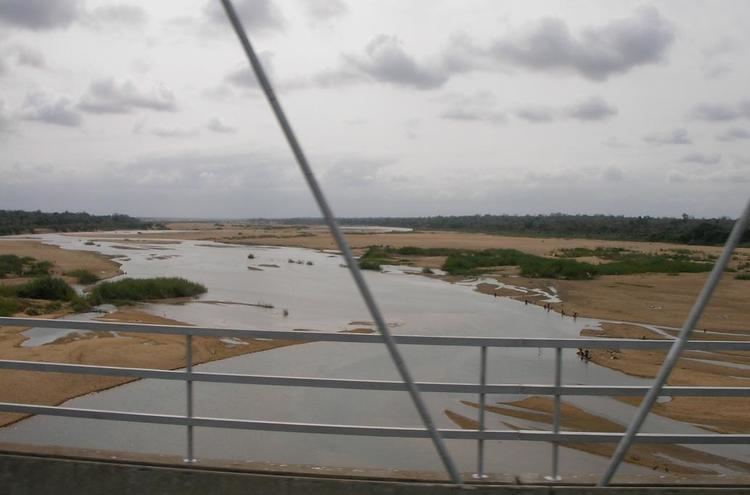Bridges Birchenough Bridge | Length 400 km | |
 | ||
Basin size 106,420 km (41,090 sq mi) | ||
The Save River, or Sabi River (Portuguese: Rio Save) is a 400 km river of southeastern Africa, flowing through Zimbabwe and Mozambique. The river has its source in Zimbabwe, some 80 km south of Harare, then flows south and then east, from the Zimbabwean highveld to its confluence with the Odzi River. It then turns south, drops over the Chivirira (“Place of Boiling”) Falls, and flows down the western side of Zimbabwe's Eastern Highlands forming a dry river valley in the rain shadow of these mountains. It is joined by the Runde River or Lundi at the Mozambique border, forming a dramatic confluence at Mahenya. It then crosses Mozambique to flow into the Indian Ocean at about 21°S.
Map of Save River, Mozambique
The Save River provided irrigation for sugar plantation, but now supports the cultivation of citrus, cotton, rice, and wheat. It is also a source of small-scale fishing for the local population.
It divides Mozambique administratively, politically, ethnically and ecologically:
The delta of the Save River includes mangrove forests which span approximately 100km on the Indian Ocean coast. Villagers in the delta basin use the mangrove forests for timber and as a place for small-scale fishing. The ecology of the lower Save River basin has been affected by cyclones, flooding, erosion, and sea-level rise.
Historically it was a transport route for gold and trade goods between the coast and the hinterland occupied by the civilisation of Great Zimbabwe in the 13th and 14th centuries AD.
